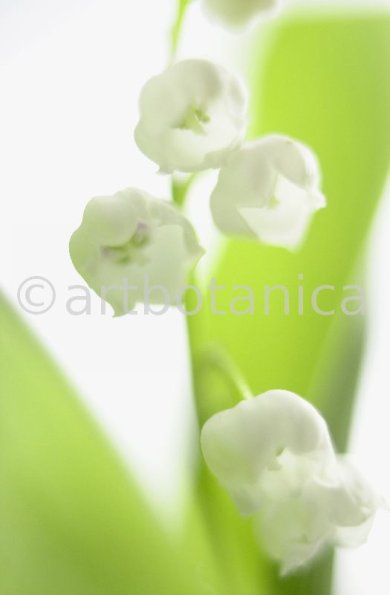
Das Maiglöckchen ist als Frühlingsbote wohl allgemein bekannt und findet sich als Zierpflanze in vielen Gärten. Wild ist es heimisch in Europa, Kleinasien, China, Japan und Nordamerika. Die kleinen, meist weißen Blüten sind glockenförmig und bilden mit 5 bis 13 Blüten eine Traube. Unverwechselbar ist auch ihr Duft. Vor allem die Blüten aber auch alle anderen Pflanzenteile enthalten herzwirksame Glykoside, die stark giftig wirken. Das Maiglöckchen ist ein wertvolles Heilmittel, das schwache Herzen stärkt und unregelmässigen Herzen wieder zu einem Rhythmus verhilft. It is a herbaceous perennial plant that forms extensive colonies by spreading underground stems called rhizomes that send out stolons. These send up numerous stems each spring. The stems grow to 15-30 cm tall, with one or two leaves 10-25 cm long, flowering stems have two leaves and a raceme of 5-15 flowers on the stem apex. The flowers are white tepals (rarely pink), bell-shaped, 5-10 mm diameter, and sweetly scented; flowering is in late spring, in mild winters in early March. The flower is also known as Our Lady's tears since, according to Christian legend, the tears Mary shed at the cross turned to Lilies of the Valley. According to another legend, Lilies of the Valley also sprang from the blood of St. George during his battle with the dragon.
